| « 26 / 30 The Blogosphere | 24 / 30 Black Boxes » |
25 / 30 Stuck in Between
The list of curious excursions continues. Nora Schultz’ class on sculptural practice has created an outpost at the local scrapyard. It turns out that the trash of Salzburg is weirdly clean and neat. It is so neat that the class termed it ‘sugar trash’. Here you see some impressions by student Ilan Bachl from Munich, who filmed the hunting and gathering at the scrapyard.
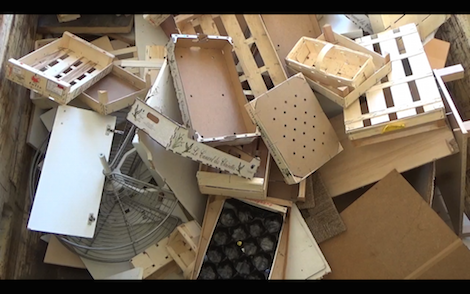
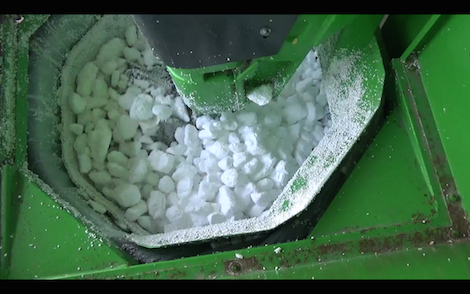
While some of the other classes are already setting up for the final exhibition on Friday, Nora Schultz’ class is still in progress. In our conversation she tells me that there won’t be a final exhibition of the class. For her the course itself is already a happening or performance. We talk about why inbetweenness can be crucial for artistic production.
What is your course about? What was the initial idea?
The idea behind the course comes from the story of Mehran Nasseri. Steven Spielberg made a film about this story, but it is based on real events. It is about a man, who loses his immigration papers, while being on a journey. He wanted to travel to London. But when he changes flights in Paris, he gets stuck in the airport, because he doesn’t have his emigration papers anymore. This led to the situation that he was neither allowed to continue his journey, nor could he go back and leave the airport. Due to this bureaucratic error he had to spend 18 years in this terminal. For the course I took this idea of the terminal as a place where you are stuck, as long as you cannot be identified. I am really interested in this question of a lack of identity (Identitätslosigkeit). This lack of identity, this inbetweenness, is a base of artistic production and it can be turned into means for the same. So, I want to create in the course a metaphorical situation.
Tell me more about this metaphorical situation.
The terminal becomes the guiding metaphor: the students move in the terminal and they produce in there. They perceive the three weeks of the academy as a continuous working with this inbetween space. How do you find materials? How do you get them here to this exclusive space at the Festung? All these difficulties are preconditions for the production. I also would like to see the entire course already as some kind of a happening or a performance, although there are no spectators. What does it mean to work in a place where you are stuck and have no fixed identity? What does it mean to work in a space that is hyper-real and a ‘junk space’ at the same time?
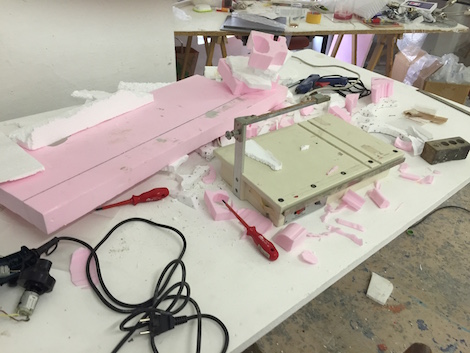
Which other questions became important throughout the course?
We read at the beginning of the class the index text by Rosalind Krauss. The idea of the index became important for us in the context of sculptural production. The index, like in photography, embodies a link to reality. It is not just a hint or something that represents a reality, but an active part of a reality. What is the connection and this embodiment of reality like? And what does that mean for a sculptural production?
So an index has a materiality?
It has a materiality, particularly, if you distinguish materiality from physicality. Physicality is the hard facts and materiality is connected to a human understanding and attention to something. Materiality already means to put things into a context. Material then is not just what it plainly is, but starts to connect itself with other materials and symbols.
Are you also interested in the limits between materiality and physicality? How does something become a material? Or how does something cease to be a material?
Yes, indeed. The question if a material can go back to be simply physical is very interesting. One student for instance rebuild a movable fence that he found at the Festung, in all its detail. Then the question is, what happens to this fence after the exhibition? Does it end up here at the street and become a use object? And probably nobody will know that this thing was produced in an art context once. I find it really interesting when link can be cut again.
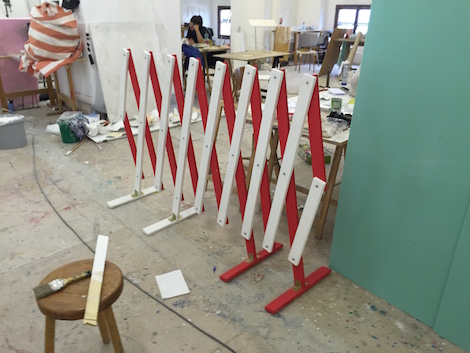
Hearing all this, it makes sense that you went to the local scrapyard to collect materials. How did you prepare the trip to the scrapyard. Did you give the students instructions?
The idea was simply to go and see what they have there. We were surprised that the trash of Salzburg is really special. In contrast to other cities it is really clean and neat. We called it sugar trash. So, the students did not only collect materials from the trash, they also dealt with the concepts of trash and scrapyards in more profound way. One student made a video on site about a machine that grinds Styrofoam. And we also invited a woman for a presentation, who we met at the scrapyard. She is writing about the books at the scrapyard. So the scrapyard became our outpost.
What is happening right now?
Right now, everybody is working individually. Their pieces are really different from each other, but from time to time you see links. What all students share and agree upon is that they don’t want to create a finished exhibition at the end of the course. They rather want to exhibit states of being of a process.
So, the process is more important than the work in our class. Is that something you would like them to take with them?
Yeah, what is really important to me when we talk about process and not-exhibiting that we already see the course as some kind of a happening or performance. If you are here for three weeks in this bubble at the summer academy, you cannot expect that the result will be an artwork that can be exhibited. On the other hand we are confronted with an exhibition situation. This can only mean that you do not distort the situation and arrange something only for that. Rather than that we play with this notion of an inclusive exclusivity.
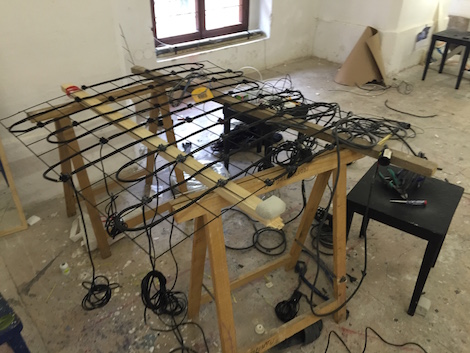
There is this famous quote: theatre is what happens during the rehearsals, not what happens in the premiere. Can you relate to this?
It does not always have to be that way. But for our context this makes sense. I also don’t think that this is the case for all classes here. I am sure that some students in my class will also arrange their works in a particular way for the exhibition. So they create a new environment for the objects they have been working on. This is also interesting and this makes it also again very terminal-like. You have displays with artificially created situations that are as real as the situations of passengers that walk through them in a state without identity. What is really important to me is this simultaneity between a complete artificial and staged situation and a reality that enters from time to time and serves a material.

